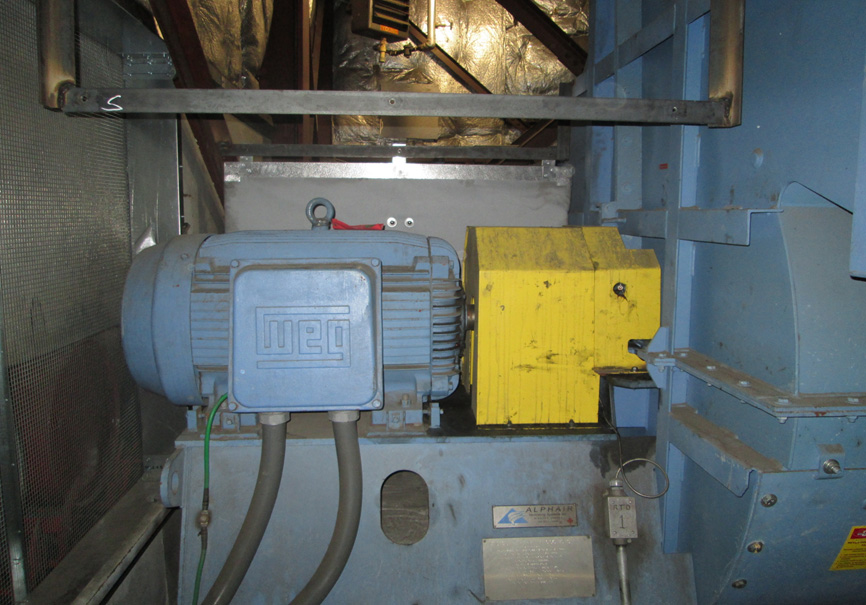
A Wisconsin power company was experiencing problems with a forced draft fan on a boiler.
The forced draft (FD) fan is responsible for supplying combustion air to the boiler. It was noisy, and not just squeak and creak noisy, not diesel engine noisy, we’re talking headache-inducing-ear-drum-popping LOUD.
The maintenance department tried to quiet the noise by installing sound deadening panels around the fan assembly, but the noise continued to grow louder.
 Crane Engineering’s Chris Holland was visiting the company on an unrelated project. The operations supervisor asked if he could help with the noise issue on the FD fan. Chris said he’d be glad to take a look at it. Hearing the FD fan operate made him suspect that there was something seriously mechanically wrong.
Crane Engineering’s Chris Holland was visiting the company on an unrelated project. The operations supervisor asked if he could help with the noise issue on the FD fan. Chris said he’d be glad to take a look at it. Hearing the FD fan operate made him suspect that there was something seriously mechanically wrong.
The noise was a symptom of a deeper issue somewhere in the FD fan/shaft/motor assembly. Chris suggested a vibration analysis be done on the fan to get to the root cause of the excessive noise. The power company had their own resources for vibration analysis, but they were not available. So after a time they asked Crane to send one of their vibration technicians to investigate the issue.

The Crane Engineering vibration technician took readings from the motor and the fan shaft pillow block bearings, and also performed a phase analysis to analyze the movement of the fan and motor (to rule out imbalance and alignment issues). What the vibration technician found was not terribly surprising.
The motor bearing was in stage three failure. This was included in his comprehensive vibration analysis report that he routinely provides to Crane Engineering customers, which helps them to understand both the issue and recommended actions to solve it.
Bearing failure generally stems from controllable operating conditions. Lack of lubrication, dirty oil, misalignment, and imbalance are all factors that can contribute to bearing failure. As the bearing begins to fail, (through damage to one of the balls/rollers, inner/outer races, or the cage) each revolution emits a vibration through the entire assembly. Each vibration causes more damage to the assembly until the bearing completely fails, or other parts fail.
There was enough vibration in the bearings to rattle the entire assembly. Due to the fact that the FD fan rotates inside a cavernous housing, the noise was greatly amplified.
Once the maintenance department knew what was wrong, they immediately went to work. They removed the motor and sent it off to be rebuilt with new bearings. When it was replaced, the noise problem was solved. The FD fan no longer requires a sound deadening panels, and functions as it should.
When maintaining equipment in your facility, it’s important to treat the root cause of problems, not the symptoms. If you notice leaks, noise, or vibrations, it makes sense to address the problem as soon as possible. Depending on the issue, small symptoms can escalate quickly into larger, more costly failures.
Have rotating equipment that is outrageously loud? Ask us about it! We gladly provide technical assistance to businesses in Wisconsin and Upper Michigan.
These Stories on Equipment Maintenance
Headquarters and Service Center
Located outside Green Bay, WI
707 Ford Street
Kimberly, WI 54136
920-733-4425
OptiFlow Design and Build Center
1002 Truman Street
Kimberly, WI 54136
920-733-4425
Burnsville Service Center
12265 Nicollet Avenue
Burnsville, MN 55337
952-444-1949
Grand Rapids Service Center
26489 Industrial Blvd
Cohasset, MN 55721
952-444-1949
© Copyright 2024. Crane Engineering. All Rights Reserved. Privacy Policy.